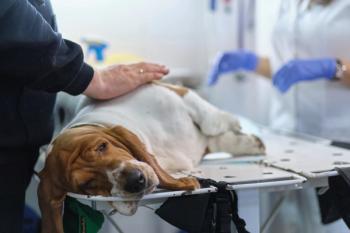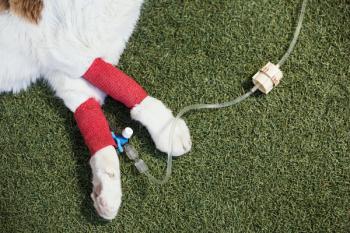
Clinical trials may hasten approval of pergolide for horses
East Lansing, Mich. - A new clinical trial may lead to the reintroduction of an FDA-approved version of pergolide for the treatment of equine Cushing's disease.
EAST LANSING, MICH. — A new clinical trial may lead to the reintroduction of an FDA-approved version of pergolide for the treatment of equine Cushing's disease, veterinarians say.
The clinical trial involved 120 horses, 40 of which were studied at Michigan State University's veterinary school.
According to Hal Schott, DVM, who headed the study at MSU, "The results proved to be quite favorable, and the data have been submitted to the FDA."
Approval of pergolide for the treatment of Pituitary Pars Intermedia Dysfunction (PPID) in horses may come as early as 2011. For horses suffering from PPID, the middle lobe of the pituitary gland becomes enlarged over time and results in overproduction of hormones, the university explains. Classic signs include a long, curly hair coat that does not shed properly. Other signs include excessive drinking and urination, laminitis, lethargy, excessive sweating, muscle-mass loss and repeated infections (e.g., sole abscesses, tooth-root infections and sinusitis).
Pergolide was withdrawn from the U.S. market in 2007 after studies revealed a link between the drug and heart-valve problems after prolonged use in people with Parkinson's disease, MSU says. The discontinuation of the drug for the veterinary market triggered a "wave of concern among veterinarians and horse owners about the continued availability of a drug that many had found effective."
As part of the study, Schott and radiologists Tony Pease, DVM, and Jennifer Kinns, DVM, performed CT and MRI imaging of the enlarged pituitary. The method allowed for much better anatomical detail.
"This was the first study to assess changes in pituitary gland size after treatment with pergolide, and though these imaging modalities are not necessary to diagnose PPID, they may prove useful in the evaluation of future additional treatment options for this disease," Schott adds.
Read more about the use of CT in horses, including further details on the MSU study investigating pituitary gland size in equine patients with Cushing's disease, in the article "Equine imaging update: Computed tomography" starting on page 1E.
Newsletter
From exam room tips to practice management insights, get trusted veterinary news delivered straight to your inbox—subscribe to dvm360.





